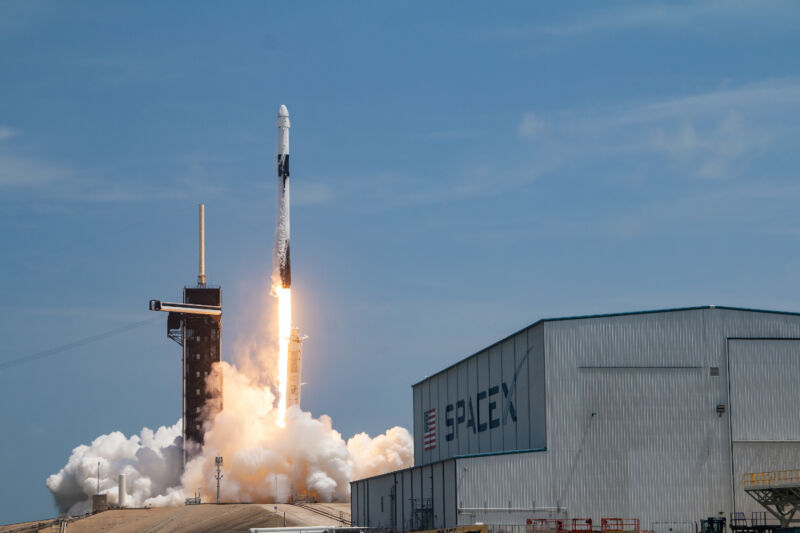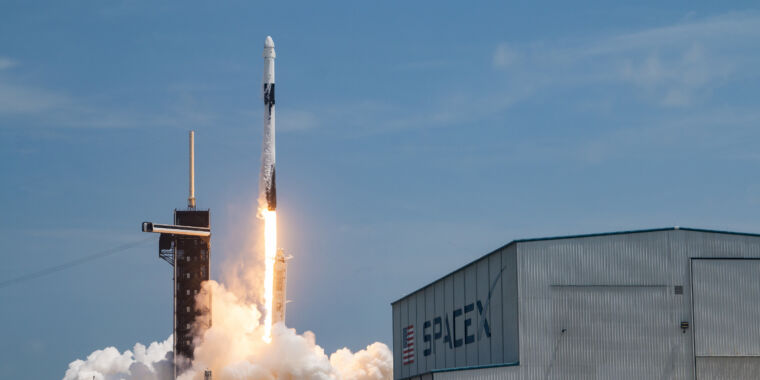
SpaceX
In the past month, both the European and Chinese space agencies have issued a call for private companies to develop the capacity to deliver cargo to space stations in low Earth orbit.
On May 11, the European Space Agency announced a “Commercial Cargo Transportation Initiative” whereby one or more providers would develop the capacity to deliver 2 tons to the International Space Station by 2028 and be able to safely return 1 ton to the earth. Each submitting company must purchase its own missile for a demonstration mission.
Less than a week later, on May 16, the China Manned Space Engineering Office announced a “Low-cost Cargo Transportation System” plan to hire private companies to deliver cargo to its Tiangong space station. Eligible providers must be able to launch at least 1.8 tons into orbit. The Chinese spacecraft does not have to return cargo, but should be able to carry off 2 tons. China’s space agency said it would pay no more than $17.2 million per ton of cargo delivered.
These are important initiatives because they represent an acknowledgment from two very different, large space agencies that NASA’s approach to commercial space over the past two decades has been successful in fostering a new space industry. However, each of these initiatives may eventually struggle.
What NASA did
In 2005, NASA, under the direction of Administrator Mike Griffin, said it would use private companies to deliver cargo to the International Space Station after the retirement of the Space Shuttle. During the initial phase of this program — formally called Commercial Orbital Transportation Services, or COTS — NASA supported SpaceX with a total of $396 million in development funding and Orbital Sciences with $288 million.
During this first phase of the program, a small team of NASA engineers worked with SpaceX and Orbital Sciences to provide technical advice and other support. At the same time, NASA officials were careful to let the companies innovate and design their own vehicles.
The program was mutually beneficial. At the end of the development program, NASA had two vehicles, SpaceX’s Cargo Dragon and Orbital’s Cygnus, that could deliver cargo to the space station for a fraction of the price it would have paid with a traditional contract method. And in turn, NASA funding enabled the US commercial space industry to take a leap forward.
“We wouldn’t be the company we are today without the support of NASA,” SpaceX president Gwynne Shotwell said in NASA’s official report on the COTS program in 2014. “We’d probably be limping and trying to change the world, but limp instead of run.”
Following this development program, both SpaceX and Orbital Sciences moved into the operational phase of the program, known as Commercial Resupply Services. In this phase, NASA purchased resupply missions from the companies. For example, SpaceX successfully launched its 28th resupply mission to the space station on Monday.
Reasons for concern
So why can’t Europe and China match this success? Of course they can. But there are some potential pitfalls.
Chief among those concerns is that both the European Space Agency and the Chinese space agency appear to be skipping the “COTS” phase of the program, in which NASA shared its expertise and provided a significant amount of money.
In contrast, for the first phase of its programme, the European Space Agency is making a total of 2 million euros available to support two companies with preliminary design and fundraising. (See a list of potential bidders.) The benefit of this is clear: it allows ESA to launch a commercial cargo program well before the next “ministerial” meeting in 2025, when it can ask member states for bigger funding to support freight. initiative.
But there is also a serious downside. While there may be more funding in the second round, the European Space Agency is counting on private companies to raise money, develop test articles and arrange an independent launch for a demonstration mission in 2028. This will easily cost hundreds of millions of dollars – all to chance of winning future freight supply contracts.
This seems like a very steep hill for European companies to climb. Certainly, no company is likely to be ready by 2028. The European Space Agency seems to recognize this, as it tells companies it would like cargo delivery services for the International Space Station or private stations that will come later.
Be patient
There is less information about the Chinese plan, but the country appears to be paying providers by the ton. While there will undoubtedly be technology transfers and other assistance from the Chinese government to its private companies, the proposed amount of funding, $17 million per ton, seems woefully inadequate for the service requested. Developing, testing and flying cargo spacecraft is both difficult and expensive.
For example, in the first service contract with SpaceX, NASA paid $133 million per mission to fly a few tons of cargo to the International Space Station. That contract was awarded at the end of 2008. Allowing for inflation, the award value would be approximately $190 million today. China is therefore proposing to pay its providers less than a fifth of what NASA SpaceX paid — and possibly without a COTS-esque precursor program.
NASA’s commercial cargo program was ultimately successful because it picked good companies, invested substantially from the start, and was able to provide technical expertise when needed. Yet it took nearly seven years from the time of the announcement of the COTS program for the first supply ship to dock with the space station.
Hopefully planners in Europe and China will be just as patient.

